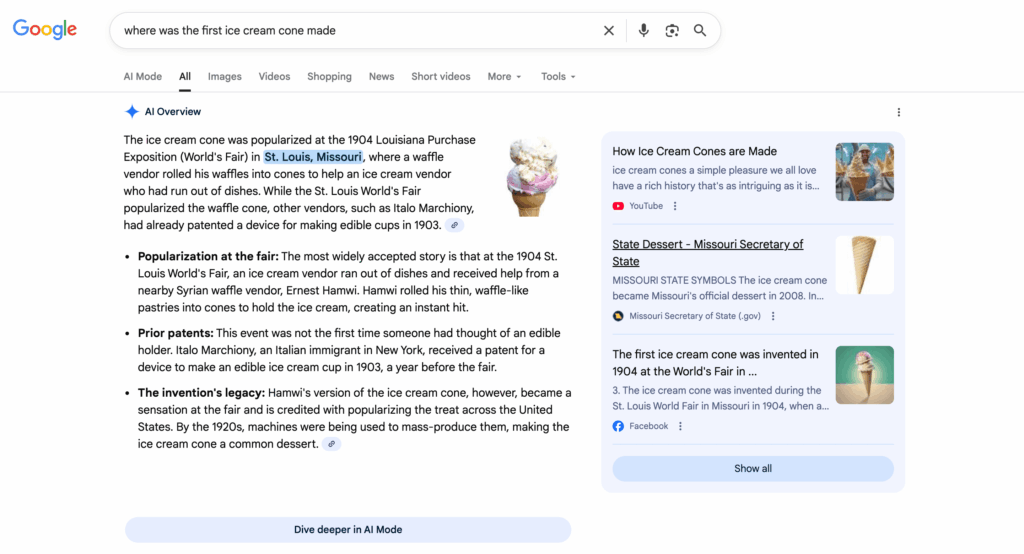Are you investing in a search engine optimization (SEO) strategy for your website, but wondering if all the time spent researching keywords, link building, and writing optimized content is actually moving the needle? Well, you’re not alone; every marketer and manager wants to see concrete results that they can measure. The good news is that tracking SEO performance isn’t impossible or as complex as you may think. To measure success accurately, you’ll need the right mix of tools and performance metrics.
Today, we’ll go over the tools you should be using to measure your SEO efforts, the metrics to look at when defining success, as well as the metrics to ignore.
Why Tracking SEO Matters
Before we delve into how to track your SEO efforts, it’s essential to establish why this is necessary. Tracking your SEO strategy is crucial for identifying which efforts are practical and which ones are not. You could conduct extensive keyword research and create high-quality content, but if you are not tracking the results of your efforts, it could all be for nothing.
By tracking your SEO strategy, you can establish proper goals and benchmarks for your efforts. Without monitoring the campaign, you will be left to guess which strategies are driving success and which ones are not working. By tracking your campaign, you will be able to derive actionable insights from your efforts rather than just hoping what you are doing is working.
Getting Started
Now that you understand the importance of tracking your SEO efforts, let’s examine what you need to track them effectively.
The first step is to establish your business goals and what you aim to achieve from your SEO campaign. If your business goal is to increase the total number of users on your website, track organic traffic. If your goal is to raise brand awareness, track the number of impressions. Regardless of your business goals, it is crucial to establish KPIs (key performance indicators) that align with those objectives and to track them diligently.
Once you’ve established the KPIs you will track, you will also establish a tracking and recording cadence. It is essential to establish a timeframe for your goals, whether that be monthly, quarterly, or yearly. Establishing a timeline for your tracking and goals will provide you with better insights and enable you to compare metrics from one period to the next.
Now that you have your KPIs and framework in place, you will need a tool to track your progress. There are numerous practical tools available for monitoring your SEO efforts, each with its own advantages and disadvantages. Google Search Console (GSC) is a great free resource from Google that will allow you to see most of the metrics you will need, while paid tools like Ahrefs and SEMRush will offer you a more in-depth look at your site’s performance, as well as give you more tools to craft a strategy.
Key Metrics to Track
There are a lot of SEO metrics out there that are related to your search performance, but some are much more important than others. Here is a list of the ones that matter most to your success and why they matter.
Organic traffic and impressions: Traffic and impressions are the engagement metrics that show you a snapshot of your site’s performance in organic search. Impressions will give you insight into your online brand awareness and overall online visibility for branded and non-branded keywords. Search traffic will show you page views, or how many people are interested in and clicking on your site.
Keyword rankings: These rankings indicate how visible your site is in SERPs (search engine results pages). Rank tracking is essential because it indicates how users and the search engine algorithms are responding to your content. The most critical SEO rankings to consider are those in positions 1-10, as these are the positions that typically appear on the first page of Google search results. These are the most important factors to consider, as only 0.44% of users click onto the second page of Google results.
Conversions: These are the desired actions that you want users to take on your site. Conversions are the ultimate end goal for most SEO efforts, whether they are purchases, form submissions, leads, or subscriptions. Conversions are, more often than not, the desired outcomes of any SEO strategy, so the conversion rate of your website is an essential factor when gauging overall performance.
Bounce rate: The bounce rate refers to the percentage of users who leave your site after viewing only one webpage, and it is a valuable metric for tracking user engagement. This metric is a good indicator of whether your site’s content is appealing and effectively matches users’ search intent.
Tools and Platforms to Use
As I touched on earlier, there are a ton of different SEO tools and platforms that you can use to track your SEO efforts. I will break them down by free and paid tools, as well as what each tool can offer you.
Free Tracking Tools
Google offers two great free tools that provide valuable insights into your site’s performance. The first tool is Google Search Console (GSC). GSC will provide you with useful insights into the specific keywords or search terms for which your pages are ranking. GSC will also allow you to view the average CTR, impressions, clicks, and search position for each page on your website. GSC also provides valuable technical SEO insights, including core web vitals and identifying which specific pages are indexing and which ones are not. Google Analytics 4 (GA4) is another useful free tool from Google that provides insights into your conversions and website traffic. GA4 provides insights into your customers’ journey, including how they arrived at the website and which pages they visited before converting. These insights will paint a better picture of the overall user experience on your site. Both of these platforms will give you a great starting point for your SEO tracking.
Paid Tracking Tools
These paid platforms will offer deeper insights and more tools to use than the free platforms that Google offers. Tools like SEMrush, Ahrefs, and Moz offer similar traffic and impression data to GSC, but also provide additional tools for keyword research and competitor analysis. Another advantage these tools will provide is insight into your AI visibility. These tools offer you the chance to look at the number of citations you are gaining in AI searches on platforms like ChatGPT, Perplexity, Gemini, and AI overviews. These platforms and their tools will provide you with a more comprehensive view of your site’s performance.
How to Track Site Performance vs Competitors
Competitor analysis is at the heart of tracking your own SEO success because it shows you how you are stacking up against other sites that are targeting the same users you are. It is essential to examine the performance of different sites in your industry to determine if you need to adjust your strategy.
To start tracking your performance against your competitors, you will first need to establish who your competitors are. These sites might not always be the sites of your direct competitors, but the sites that are ranking for your target keywords. Once you have identified which sites are targeting the exact keywords as your site, conduct a keyword gap analysis to uncover which keywords are driving traffic that you are not currently optimizing for. By completing keyword gap analysis, you will fill in the cracks in your SEO strategy.
Now that you have a good idea of your competitors and the words they are targeting, you must establish a benchmark against them that you will use to measure your progress over time. Start by comparing your current metrics and those of your competitors to establish a baseline. Set realistic targets for your site to achieve and monitor all progress. This baseline will help you maintain realistic expectations and goals. Measuring progress against competitors will also alert you to any sudden moves they make, allowing you to adapt your strategy to keep your own progress.
Challenges that Might Arise
Data Problems that Might Arise
When tracking your SEO success, a few common challenges may arise. One common challenge is data fragmentation, where your data is scattered across multiple platforms. This means that some of your KPIs could be in GA4 while others are in Ahrefs. This fragmentation makes it harder for you to piece the data together into a cohesive report. Data fragmentation can also lead to errors, duplicate data reporting, and a lack of context for specific pieces of data. To overcome this challenge, you can utilize a centralized dashboard, such as Looker Studio or Power BI, to extract essential metrics from various platforms, enabling you to view and analyze all the data in one place. These platforms offer dozens of dashboard templates that allow you to view all your data in one place.
Another common challenge is determining which digital marketing initiatives contributed to a specific outcome. For example, a user first interacts with your website through an organic blog post, then comes back later through an ad, and converts after seeing the ad. In this situation, it can be hard to attribute which touchpoint actually caused the conversion. To overcome this challenge, use a model that attributes credit to touchpoints through a system that weighs actions based on the influence they had on each user. This attribution will give each touchpoint proper credit and clear up any attribution confusion.
Technical Problems that Might Arise
There are a few technical SEO issues that may arise in addition to the data issues. Technical SEO is imperative to your overall SEO success. If you are writing the most optimized content and have the nicest-looking website, but your site is not technically sound, it will all be for nothing. Some common technical issues that you may encounter include slow load speed, canonical linking issues, pages not indexing, or incorrect XML sitemaps. All of these issues can limit your site’s visibility in search and impact your overall SEO performance.
It is essential to utilize Google Search Console for conducting regular technical site audits. Regularly check GSC to ensure your pages are indexing correctly, that all your Core Web Vitals are in good shape, and that there are no other outstanding issues with your website that could impact your search visibility.
Reporting SEO Progress

Now that you know how to track your SEO progress, you’ll need to learn how to share progress in a way that is digestible to an audience. SEO progress can sometimes be complicated to explain and report, but it doesn’t have to be!
The first step in SEO reporting is to identify the KPIs that your audience will care about the most. There is a wealth of data that can be presented from any SEO campaign, but not all of it is relevant or important to specific audiences. For example, if your managers only care about sales numbers from the SEO campaign, it would be inappropriate to show them how your impressions have increased YoY. That metric has nothing to do with what they want to know. Instead, show them that organic conversions have gone up 10% this year.
Once you select the metrics that matter most, you will need to find the proper format to present them. SEO data is best visualized through dynamic dashboards, performance trend graphs, or KPI scorecards. Visuals like these help portray progress quickly and are easy to digest.
What matters most when reporting your progress is that you are not just dumping data on your audience. It is crucial to tell a story with the data by putting the metrics into context and recapping what is working and what is not. Storytelling will keep your audience engaged and provide them with the whole picture behind why the metrics appear as they do.
Tracking SEO Progress in the World of AI
As you are likely aware, AI is rapidly transforming the world of search. Since users interact with search differently, you will need to adjust the metrics you use to measure success. In this new era of search, users are increasingly obtaining most of their information through zero-click searches. A zero-click search occurs when a user searches for something and finds the information they need in AI chat, AI overviews, featured snippets, or other SERP features without having to click on a website. An example of this could be a user searching and finding information in an AI Overview from Google or a response from ChatGPT. So, how can you measure your SEO success in these instances? Well, it’s simple, but it might require more analysis.
When a user obtains information from an AI Overview or AI chatbot, such as ChatGPT, small icons called citations appear. These icons represent the logos of the sites from which the AI sourced the information to answer the user’s query. Look at these two examples below:
Google’s AI Overview:

ChatGPT Citations:

In both of these searches, I obtained the information I was looking for without having to click on any website. However, I noticed the icons for ESPN and the Missouri Secretary of State when reviewing the sources from which the AI pulled the information. These sources will serve as a basis for evaluating these websites and help build their brand awareness. The more users see your logo in these searches, the more familiar with your brand they will be, and the more authority they will attribute to your site. This means when it comes time to convert, they will search for your brand directly because you are already top of mind to them, and they have already associated authority with your brand name.
To properly track your site’s wins in AI search, you will want to examine two key metrics: visibility and brand searches. Tracking visibility will show you all the times when you appear in AI search. Couple that metric with branded searches, which show you how many people have your brand top of mind. These two metrics will provide a comprehensive picture of how your site is performing in AI search.
FAQs
What key metrics should I focus on when tracking SEO?
There are numerous metrics to choose from, but the most important ones are organic traffic, keyword rankings (mainly top 10), conversions, click-through rates, and impressions. While these metrics are essential, the most crucial ones are those that align with your business goals.
What tools should I use to track my SEO efforts?
There are numerous great platforms available for you to use. Some great free options include Google Search Console and GA4, which provide overall site performance and health data. Then there are paid tools like Ahrefs, SEMrush, and Moz, which provide more profound insights with features such as keyword gap analyzers and keyword planners.
How can I report SEO progress?
To accurately report SEO progress, you will need to determine which metric matters most to your audience. Then you should report those metrics in a visually appealing and easily digestible way. Don’t just provide a report number; tell the story behind the data, giving your audience context for why the numbers appear as they do.
How often should I track my SEO progress?
The answer to this question depends on your business and its goals. If your goals are monthly, track your performance every month; if they are weekly, track them every week. Regardless of the cadence, ensure that it remains uniform from period to period and makes sense for you and your business.
How can I track my performance in AI search?
There are two metrics to track to determine your performance in AI. The first is AI visibility, which refers to the number of times you are being cited and referenced in AI search, driving your brand awareness. The second is branded searches, which show you how well your brand awareness from AI search is translating to traditional search.
Key Takeaways
If you’re working hard on your SEO strategy and wondering whether it’s truly making a difference, don’t worry, you’re not alone! The key to tracking your SEO efforts is focusing on the right tools, the right metrics, and a solid plan that aligns with your business goals.
Start by determining which metrics matter most to your brand, whether that’s driving more organic traffic, building brand awareness, or increasing conversions. Utilize free tools like Google Search Console and Google Analytics to monitor your progress, and once you’re ready, explore paid options like SEMrush and Ahrefs for more in-depth insights. Keep an eye on your competitors to spot new opportunities and regularly review your technical SEO to ensure your site is healthy and user-friendly.
Above all, tell a clear story with your SEO data so everyone involved understands what’s working and what needs attention. At Digital Strike, we’re here to help you make sense of it all and turn your SEO efforts into real growth. Ready to take your SEO tracking to the next level? Let’s get started together!





